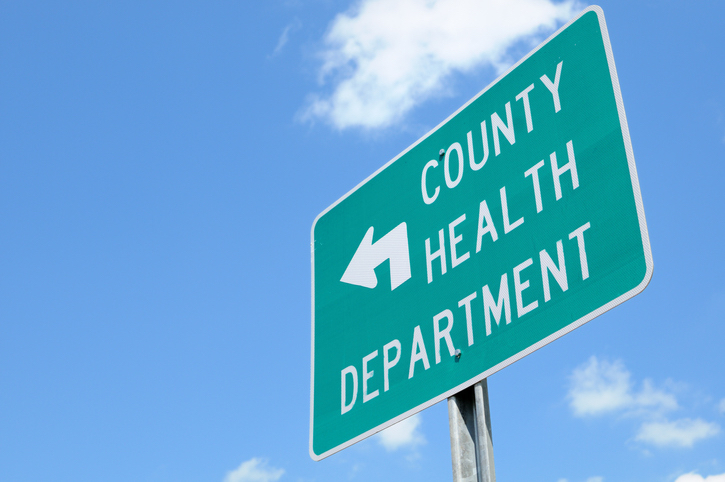Three days after the Michigan Supreme Court ruled Gov. Gretchen Whitmer’s COVID-19 executive orders are unconstitutional, the state’s Department of Health and Human Services issued a mask mandate and limitations on gatherings.
The health agency stated it has authority under the state’s public health code and its orders will remain in place until October 30.
The action was not unexpected. Some county health departments were already taking steps to circumvent the state Supreme Court’s decision. The Oakland County Health Department ordered a mask mandate and restrictions, and the health department in Kent County stated, “actions such as orders for isolation and quarantine are not affected.”
In a 7-0 decision regarding a 1976 statute, the state Supreme Court ruled Whitmer did not have the constitutional authority to issue or renew executive orders related to the pandemic beyond April 30, 2020, without the approval of the legislature. In a 4-3 decision, the justices also ruled such authority did not exist under a 1945 statute because “the act unlawfully delegates legislative power to the executive branch in violation of the Michigan Constitution.”
Actions and Reactions
The health departments’ actions have put Michigan businesses and organizations on notice. The Catholic Diocese of Grand Rapids and Detroit stated they are still endorsing the governor’s current orders.
In a separate action on October 5, Whitmer filed a motion with the Michigan Supreme Court asking that her orders, totaling nearly 1,000 pages, remain in effect until October 30.
Michigan Attorney General Dana Nessel said on October 4 her office “will no longer enforce the governor’s executive orders through criminal prosecution.”
Governor Unbowed
The Supreme Court’s decision was prompted by a federal lawsuit filed by the Mackinac Center for Public Policy challenging Whitmer’s temporary ban on certain medical procedures. Before issuing a decision, U.S. District Judge Paul Maloney asked the Michigan Supreme Court to review the 1945 and 1976 statutes. A decision without state court clarification could have resulted in a lengthy appeal on that basis alone.
“The Supreme Court said the orders are unconstitutional, so no law enforcement agency would enforce such orders and courts would abide by the opinion,” said Michael Van Beek, director of research at the Mackinac Center. “So, trying to delay it or stall it has no purpose. This is the law.”
Immediately after the decision, Whitmer said otherwise.
“It is important to note, this ruling does not take effect for at least 21 days and until then, my emergency declaration and orders retain the force of law.”
After the AG stated her office would no longer enforce the orders, Whitmer filed the motion and, in a news release, stated ending the orders would be difficult.
“We need this transition period,” Whitmer said.
“I understand from the governor’s perspective the transition might be tricky, but that is her problem,” Van Beek told Health Care News. “This is her fault. She is the one who put all these eggs in one basket, presuming the Supreme Court wouldn’t rule against her. She made her bed.”
Van Beek says he doesn’t believe the motion Whitmer filed on October 5 will amount to much.
“I don’t know how the Supreme Court could even do it, saying the orders are unconstitutional but telling the pubic they must follow them for a few more weeks,” Van Beek said.
On October 12, the Supreme Court denied Whitmer’s request.
Local Control Angle
The latitude the state’s public health code gives to local authorities, on the other hand, maybe a formidable obstacle to reopening the state, Van Beek says.
“The health departments can issue orders to deal with a public health crisis, and before the court decision, the director of the health department even said as much, but there are still questions regarding the scope of what local health departments can do. They may be narrower,” said Van Beek.
“Local health departments can prohibit the gathering of people, but they likely can’t tell people they have to wear masks,” said Van Beek. “They can issue orders to help ensure the continuance of health services, but our hospitals are not overrun right now, so there is a question whether the health department can do the things the governor was trying to do,” says Van Beek.
The justices did not issue an opinion on the limitations of the state’s public health code.
Pushing the Limits
It is likely local health departments will push their authority to the limit in order to delay the economic and social reopening of the state, Van Beek says.
“There is just going to be a lot more litigation, and it’s going to continue,” said Van Beek. “I have no doubt the state occupational safety and health administration will also push the limits of the law. They will likely take the governor’s workplace requirements and can also issue emergency orders,” said Van Beek.
“So we’ll be in the same spot,” said Van Beek. “Meet the new boss, the same as the old boss.”
The court said the most effective approach to the matter is through the political process.
“Political remedies abound too,” stated the opinion. “The people could convince their elected representatives to repeal (or amend) [the statutes].”
A ballot petition to stop the governor’s orders appears to have collected the necessary signatures to get the issue on the 2022 ballot. A recall petition to remove the governor from office is circulating.
“If citizens are unhappy with the governor’s actions, they can launch a petition to recall her, or vote against her in the next election,” the justices’ opinion stated.
MLive reported on October 6, 11 recall petitions have been approved by the Michigan Board of State Canvassers. Petitions must collect signatures within 60 days.
AnneMarie Schieber (amschieber@heartland.org) is the managing editor of Health Care News.
(updated October 14, 2020)
